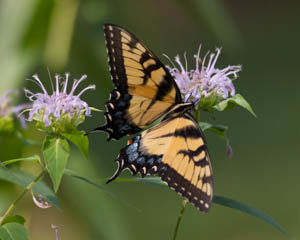Vol. 15 Issue 4, Winter 2010
By Joe Coleman
The Loudoun Wildlife Conservancy’s many volunteers, through our different citizen-science projects, collect a wealth of data every year.

Photo by Nicole Hamilton
In the process, we have learned a tremendous amount about the natural world that surrounds us. Our curiosity has been stimulated time and time again, prompting us to learn more about what we are observing. This has helped Loudoun Wildlife Conservancy develop objectives that are science-based and action-oriented.
While collecting data is important, it cannot be the only goal.
Each of us, in many different ways, can make a difference, and we often do. The knowledge we gain observing how the natural world works and what impacts its health and even its existence, inspires us to cherish and preserve it.
Since Loudoun Wildlife Conservancy’s founding, we have surveyed Loudoun’s birds and butterflies and have developed a good picture of what is thriving and what is threatened. We have seen how rich Loudoun County’s bird and butterfly habitats are and how important it is to protect these so both can thrive. Through our butterfly counts, we have come to not only appreciate the beauty of these creatures but their complex life cycles as well. We have learned what their host plants are and what kind of habitat they need to flourish. We are now partway through a five-year bird atlas, which will tell us definitively the state of Loudoun’s bird life today and what areas are most important for birds. With this information, we plan to identify those areas that need to be protected and devise strategies for doing so.
Early in our existence, we partnered with a number of other organizations to create a stream-monitoring program so we could see for ourselves the condition of the county’s streams. Unfortunately, we found that many of our waterways were not as healthy as they had been, but we learned also what is needed to reverse those trends. From the mass of research that has been completed and confirmed throughout the country, we concluded that forested riparian buffers are the very best way to protect water quality. As a result, we continue to support Loudoun County’s efforts to enact its own Chesapeake Bay ordinance. By doing so, the county will not only protect the Bay, but just as importantly, return our local streams to their former good health.
We have learned through our bluebird-monitoring efforts how important nesting cavities are for many different bird species. Fifty years ago, people were worried we would lose our bluebirds. However, as a result of efforts like ours, bluebird populations have rebounded and are again thriving throughout the east.
And while our amphibian-monitoring program is only a couple of years old, it has already opened up an entirely new world for many of us. We have learned of the many threats these fascinating creatures face and how important they are to the overall ecology. Loudoun Wildlife Conservancy is committed to doing what we can to help them continue to thrive.
Join our monitoring programs to make a difference.

